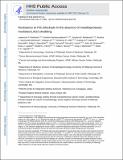| dc.contributor.author | Andrews, Lawrence P | |
| dc.contributor.author | Somasundaram, Ashwin | |
| dc.contributor.author | Moskovitz, Jessica M | |
| dc.contributor.author | Szymczak-Workman, Andrea L | |
| dc.contributor.author | Liu, Chang | |
| dc.contributor.author | Cillo, Anthony R | |
| dc.contributor.author | Lin, Huang | |
| dc.contributor.author | Normolle, Daniel P | |
| dc.contributor.author | Moynihan, Kelly Dare | |
| dc.contributor.author | Taniuchi, Ichiro | |
| dc.contributor.author | Irvine, Darrell J | |
| dc.contributor.author | Kirkwood, John M | |
| dc.contributor.author | Lipson, Evan J | |
| dc.contributor.author | Ferris, Robert L | |
| dc.contributor.author | Bruno, Tullia C | |
| dc.contributor.author | Workman, Creg J | |
| dc.contributor.author | Vignali, Dario AA | |
| dc.date.accessioned | 2021-10-18T14:57:59Z | |
| dc.date.available | 2021-10-18T14:57:59Z | |
| dc.date.issued | 2020 | |
| dc.identifier.uri | https://hdl.handle.net/1721.1/133023 | |
| dc.description.abstract | Copyright © 2020 The Authors, some rights reserved; exclusive licensee American Association for the Advancement of Science. No claim to original U.S. Government Works Mechanisms of resistance to cancer immunotherapy remain poorly understood. Lymphocyte activation gene–3 (LAG3) signaling is regulated by a disintegrin and metalloprotease domain-containing protein–10 (ADAM10)–and ADAM17-mediated cell surface shedding. Here, we show that mice expressing a metalloprotease-resistant, noncleavable LAG3 mutant (LAG3NC) are resistant to PD1 blockade and fail to mount an effective antitumor immune response. Expression of LAG3NC intrinsically perturbs CD4+ T conventional cells (Tconvs), limiting their capacity to provide CD8+ T cell help. Furthermore, the translational relevance for these observations is highlighted with an inverse correlation between high LAG3 and low ADAM10 expression on CD4+ Tconvs in the peripheral blood of patients with head and neck squamous cell carcinoma, which corresponded with poor prognosis. This correlation was also observed in a cohort of patients with skin cancers and was associated with increased disease progression after standard-of-care immunotherapy. These data suggest that subtle changes in LAG3 inhibitory receptor signaling can act as a resistance mechanism with a substantive effect on patient responsiveness to immunotherapy. | en_US |
| dc.description.sponsorship | NIH (Grant EB022433) | en_US |
| dc.language.iso | en | |
| dc.publisher | American Association for the Advancement of Science (AAAS) | en_US |
| dc.relation.isversionof | 10.1126/SCIIMMUNOL.ABC2728 | en_US |
| dc.rights | Creative Commons Attribution-Noncommercial-Share Alike | en_US |
| dc.rights.uri | http://creativecommons.org/licenses/by-nc-sa/4.0/ | en_US |
| dc.source | PMC | en_US |
| dc.title | Resistance to PD1 blockade in the absence of metalloprotease-mediated LAG3 shedding | en_US |
| dc.type | Article | en_US |
| dc.identifier.citation | Andrews, Lawrence P, Somasundaram, Ashwin, Moskovitz, Jessica M, Szymczak-Workman, Andrea L, Liu, Chang et al. 2020. "Resistance to PD1 blockade in the absence of metalloprotease-mediated LAG3 shedding." Science Immunology, 5 (49). | |
| dc.contributor.department | Massachusetts Institute of Technology. Department of Biological Engineering | en_US |
| dc.contributor.department | Koch Institute for Integrative Cancer Research at MIT | en_US |
| dc.relation.journal | Science Immunology | en_US |
| dc.eprint.version | Author's final manuscript | en_US |
| dc.type.uri | http://purl.org/eprint/type/JournalArticle | en_US |
| eprint.status | http://purl.org/eprint/status/PeerReviewed | en_US |
| dc.date.updated | 2021-09-03T17:06:04Z | |
| dspace.orderedauthors | Andrews, LP; Somasundaram, A; Moskovitz, JM; Szymczak-Workman, AL; Liu, C; Cillo, AR; Lin, H; Normolle, DP; Moynihan, KD; Taniuchi, I; Irvine, DJ; Kirkwood, JM; Lipson, EJ; Ferris, RL; Bruno, TC; Workman, CJ; Vignali, DAA | en_US |
| dspace.date.submission | 2021-09-03T17:06:06Z | |
| mit.journal.volume | 5 | en_US |
| mit.journal.issue | 49 | en_US |
| mit.license | OPEN_ACCESS_POLICY | |
| mit.metadata.status | Publication Information Needed | en_US |
